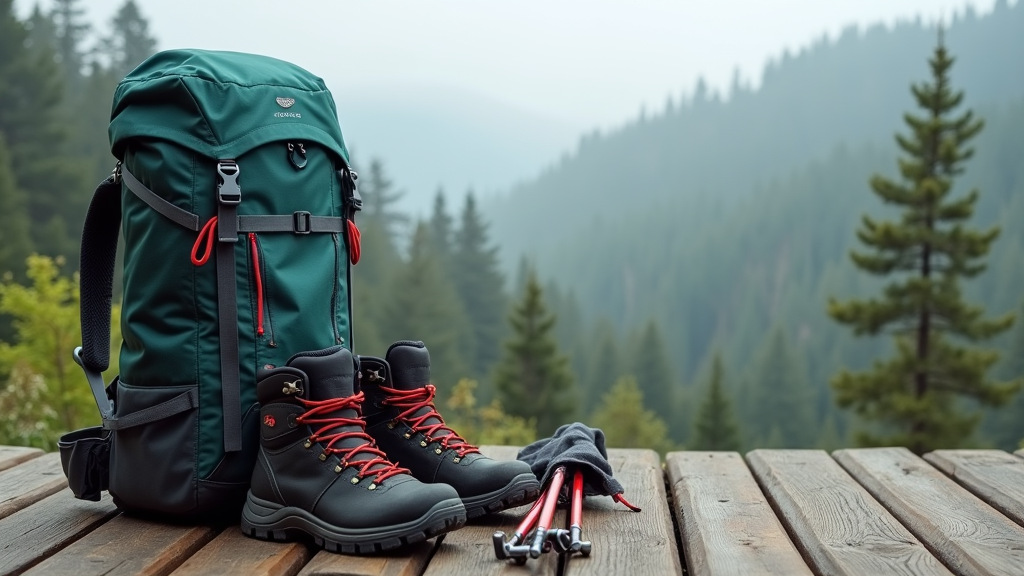Your legs are burning, your lungs are screaming, and the trail seems endless…
But you’re only on day two of a two-week trek.
What went wrong?
The answer: you didn’t train for this.
Training for long distance backpacking is a different kind of challenge compared to regular hiking or casual weekend trips.
We’re talking serious miles, day after day, with a loaded backpack and changing terrain. Experiences getting ready for a long trek, especially when People realized how much their feet, legs, and lungs would need to step up, proved just how much preparation matters.
If you’re planning a big adventure on the trails, a good mix of physical training, smart planning, and the right mindset can make all the difference between an enjoyable adventure and a tough slog.

Long Distance Backpacking: Why Training Matters
- Packing up for an extended hike sounds pretty romantic.
- It’s just you, your gear, and the open path.
- But once you’ve spent a full day on your feet, climbing hills and moving through rocky trails, the reality sets in.
- Endurance, strength, stamina, and mental grit matter way more than you might expect.
- Extended hikes can last days, weeks, or even months (in the case of big thru-hikes).
- So, training helps your body adjust, lowers the risk of injury, and builds the confidence you need to keep going when things get tough.
- The American Hiking Society points out that poor preparation is one of the most common reasons why people bail on long hikes.
- Even fit folks find out quickly that backpacking with 25–40 pounds of weight for back-to-back days uses muscles and skills you might not have put tension on before.
- Training for these trips means building not just aerobic power, but also the ability to recover, manage discomfort, and handle those random aches that show up on the trail.

Getting Started: Building Your Training Foundation
General fitness is a solid starting point, but for long distance backpacking, specific training really pays off. Here are some basics to focus on early in your plan:
Steady Cardio:
- Aim for 3–5 sessions per week.
- Think brisk walking, running, cycling, or swimming.
- Your goal is to boost cardiovascular endurance.
- Switching up your routine will keep things interesting and make you less likely to burn out before your trip even starts.
Back Strength & Core:
- Planks, bridges, and exercises targeting the lower back help keep you upright and strong when carrying your pack.
Leg Day Every Day:
- Lunges, squats, and step-ups with increasing resistance mimic trail movement.
- Weak quads and glutes are a fast track to fatigue.
Balance Training:
- Trails aren’t flat treadmills.
- Use balance boards, stand on one leg, or try some yoga to help with stability
- Especially with a loaded pack.
Mixing hikes into your training—even short local walks with a partially loaded pack—starts getting your body used to the extra weight and movement patterns.
Take note: gradually adding weight to your pack prevents sudden shocks to your muscles and joints.
Dialing In Your Backpacking Training Plan
Having a plan is super helpful, especially if you’re new to backpacking or training for longer trips than you’re used to. Here’s a simple week-by-week plan you can follow ahead of a big trek:
Start Slow:
- If you’re brand new, begin with brisk walks or hikes 2–3 days a week, 30–45 minutes at a time. Carry a light daypack at first.
Build Up Carefully:
- Every week, add a little time, distance, or pack weight.
- Good markers: reaching a 3-hour walk with a moderate pack by a few weeks in, gradually building to 6–8 hour sessions once a week.
Simulate the Trail:
- If possible, hike on similar terrain to what you’ll face.
- Try to drive to some hilly parks or rougher trails occasionally to mimic the challenge of your target hike.
Test Your Gear:
- Get used to your boots, backpack, and the clothes you’ll actually wear.
- Blisters and chafing caused by unfamiliar gear can ruin your trip.
Also, try to include rest weeks every four to five weeks, allowing your body to recover and adapt. This reduces fatigue and helps keep motivation high.

Strength Training for Long Distance Hiking
When people talk about “trail legs,” they’re really describing strong, well-conditioned muscles that don’t give out when the miles stack up. Here are a few exercises to throw into your regular workout to get hiking ready:
- Weighted Step-ups: Use a staircase or sturdy box, wearing your loaded backpack. This basic move is almost identical to climbing hills with a pack.
- Split Squats and Lunges: These moves help each leg develop strength and stability on its own.
- Calf Raises: Trails with rocks and roots require a lot from your calves, especially when descending.
- Core & Glute Work: Planks, deadlifts, and hip bridges help keep your posture tall and your stride strong.
- Shoulder and Upper Back Training: Rows and overhead presses strengthen the muscles that support the pack straps.
Keep reps higher (10–15 per set) with moderate weight. Focus on form so you don’t get hurt and add more resistance as you improve.
Smart Cardio: Boosting Your Endurance
- Aerobic conditioning is key for backpackers, especially on multiday treks where your energy gets tested.
- Cardio sessions that last at least 45–90 minutes, with steady pacing and a little bit of uphill work, help build endurance.
- I’m a fan of hiking-style interval training too, like doing hilly hikes or treadmill/Stair-master workouts set to rolling inclines.
Cross training options like cycling or swimming build fitness without the pounding stress of constant hiking.
These are super helpful if you’re dealing with any lingering injuries or just want to keep things interesting.
You may also find spinning classes or rowing workouts a good way to mix up your routine.
Trail-Ready Conditioning and Recovery
- Backpacking is about endurance, not just brute strength.
- Mixing in some real-world hikes with a full or nearly full pack builds trail readiness.
- On weekends, try for at least one longer hike with all your gear packed as if you’re heading out for the real deal.
- This is the best chance to check how your feet, back, and shoulders hold up, and to spot any sneaky hotspots on your skin or gear problems.
- Recovery is equally important.
- Multiday treks mean your body has to bounce back each morning.
- Epsom salt soaks, foam rolling, light yoga, and good nutrition help you recover faster and stay strong for the adventure.
- Don’t forget, adequate sleep is crucial for rebuilding muscles and keeping your immune system in check.
- Post-hike stretching sessions will also make a huge difference in your long-term flexibility.

Practical Tips for Extended Hiking Trip Preparation
Training isn’t the only thing that counts. You’ll want to dial in the details before you head out:
- Nutrition: Try out trail food before your trip. Make sure snacks, meals, and hydration options actually sit well with you on exertion days.
- Gear Shakedowns: Pack and repack your bag, checking weight and comfort. If something is awkward in your living room, it’ll bother you a lot more on the trail.
- Map and Navigation Practice: Get familiar with map reading and your GPS ahead of time, so you’re not learning under pressure in the wild.
- BreakIn Your Footwear: Blisters are the worst. Wear your hiking shoes or boots on training walks to break them in and let your feet toughen up.
Also, take a look at weather reports during your practice hikes.
Getting used to hiking in different weather conditions can prevent surprises during your trek.
Rain, heat, or wind each bring their own set of challenges, so being prepared for anything is an edge you want to have.
Common Problems and How to Avoid Them
- Overuse Injuries: Ramping up distance or weight too quickly can cause stress injuries. Stick to your timeline and listen to your body. Stretching, foam rolling, and rest days help a ton.
- Poor Foot Care: Invest in good socks and learn how to tape up problem spots. A few minutes of care after each hiking day can save your feet.
- Dehydration: Practice drinking water regularly during your training hikes. Don’t wait until you’re thirsty.
- Pack Discomfort: Your backpack should be properly fitted (most stores will help with this), and padded well enough to avoid sore spots.
Overuse Injuries
- No one wants shin splints or achy knees, and overtraining is a common trap.
- Mixing rest days, gentle stretching, and different types of exercise keeps you on track.
- If joint or muscle pain doesn’t go away after a rest day, check with a healthcare pro before it turns into something bigger.
Poor Foot Care
- A great pair of socks and some foot powder go a long way.
- you don’t want to learn the hard way that taping hot spots at the first sign of rubbing saves a trip later.
- Pack a simple blister kit and know how to use it before you need it.
- Remember to air out your feet at lunch stops and check for any red spots or swelling.
Backpacking Tips for New and Experienced Hikers
- Start Small: Plan a few overnight trips before your main event. These mini adventures give you a chance to practice and see where you might need to adjust your routine or gear.
- Buddy Up: If you can, train with friends who have done similar trips. Experience rubs off, and sharing ideas keeps you motivated.
- Embrace Flexibility: Weather, schedules, and life throw curveballs. Adjust your plan as you go without getting discouraged.

Frequently Asked Questions
People prepping for big backpacking trips usually have a lot of the same questions. Here’s a quick rundown of things that are asked a lot:
How far should I aim to hike each day when training?
Answer: Starting with local 3–5 mile hikes and slowly increasing to your planned daily mileage is a good way to build up safely. For multiday trips, working up to two-thirds of your expected daily distance with a full pack helps your body adjust.
Do I need to train with a loaded backpack?
Answer: Absolutely. Training with your actual gear helps your body adapt to the load, shows you what needs fixing, and reduces surprises on the trail.
What’s the best way to avoid blisters?
Answer: Properly fitting shoes, good socks, and regular foot checks during training hikes. Also, learning to recognize and treat hot spots before they become bigger issues.

Wrapping Up
Training for long distance backpacking takes time, patience, and a willingness to learn from each outing.
Building endurance, strength, and trail confidence helps you face whatever comes your way on the trail.
I’ve realized that good preparation doesn’t just help you finish a long trek, it can turn the whole adventure into a rewarding, memorable experience.
Stick with your plan, keep learning, and enjoy every mile out there.
No matter how big or small your trek, getting ready the right way makes all the difference. Happy hiking!
You’re not just training your legs—you’re training your resilience, your mindset, and your will to keep going when it gets tough.
Use this guide to start building the mental and physical grit every great hiker needs!
